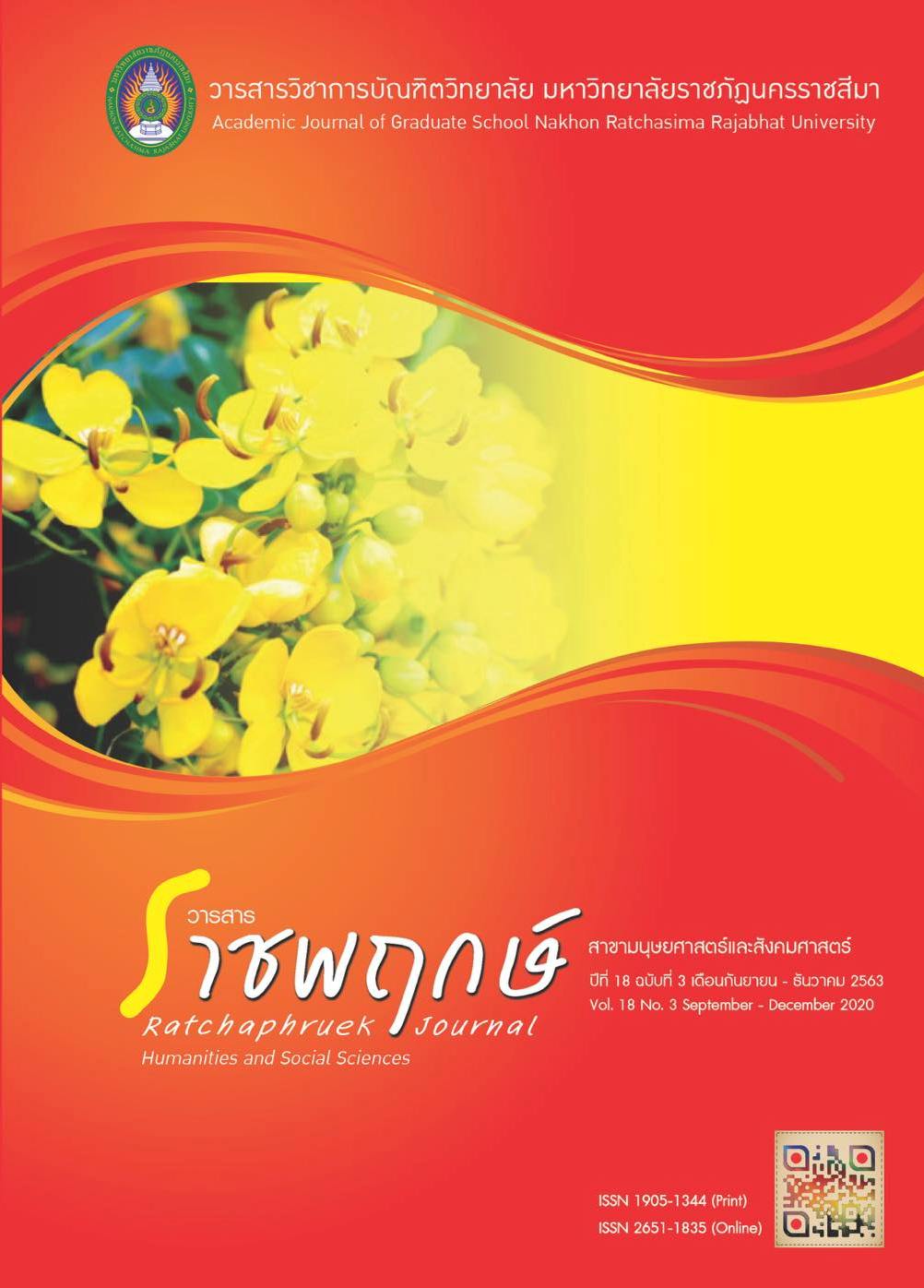Development of Indicators for the Characteristics of Positive Classroom Climate in Upper Secondary School
Main Article Content
Abstract
The purposes of this research were: 1) to develop the indicators, 2) to analyze exploratory factor analysis, (EFA) and 3) to analyze a confirmatory factor analysis (CFA) of the indicators for the characteristics of positive classroom climate in Upper Secondary School. The population were the 85,626 of upper secondary school students in 9 lower northern region provinces. The sample was the 1,296 by used in the Exploratory Factor Analysis: 423 people used in the Confirmatory Factor Analysis and 873 people random by multistage random sampling. The research instrument was positive classroom climate test in Upper Secondary School. It’s contain 32 five-rating scale items. The results of this research revealed that: 1) The indicators of positive classroom climate’s characteristics consisted of 11 indicators, their appropriateness was between a high level and the highest level; 2) The exploratory factor analysis results by principal component analysis found that 1 component with Eigen values> 1, the percentage of variance was 63.468%; and 3) The First Order Confirmatory Factor Analysis fit to the empirical data with value Chi-square = 40.038 , df = 27 , p = 0.0508 , RMSEA = 0.024 , CFI = 0.998 , TLI = 0.996
Article Details
References
2.พรรณณี ช.เจนจิต. (2538). จิตวิทยาการเรียนการสอน. กรุงเทพฯ: คอมแพคท์พริ้นท์.
3.วิชัย วงษ์ใหญ่. (2537). กระบวนการพัฒนาหลักสูตรและการเรียนการสอนภาคปฏิบัติ. กรุงเทพฯ: สุวีริยาสาส์น.
4.สันติ บุญภิรมย์. (2557). การบริหารจัดการในห้องเรียน (Classroom Managemant). กรุงเทพฯ: ทริปเพิ้ล เอ็ดดูเคชั่น.
5.สำนักงานคณะกรรมการการศึกษาขั้นพื้นฐาน. (2561). แนวทางการประเมินคุณภาพตามมาตรฐานการศึกษา ระดับปฐมวัย ระดับการศึกษาขั้นพื้นฐาน และระดับการศึกษาขั้นพื้นฐานศูนย์การศึกษาพิเศษ. กรุงเทพฯ: สำนักงานคณะกรรมการการศึกษาขั้นพื้นฐาน.
6.สำนักงานคณะกรรมการการศึกษาเอกชน. (2531). แนวทางในการดำเนินงานการนิเทศภายในโรงเรียนเอกชน. กรุงเทพฯ: หน่วยงานศึกษานิเทศก์ สำนักงานคณะกรรมการการศึกษาเอกชน.
7.Frisby, B., Martin, M. (2010), Instructor-student and student-student rapport in the classroom. Communication Education, 59(2), pp. 146-164.
8.Glasser, W. (1998). Choice theory: A new psychology of personal freedom. New York, NY: Harper.
9.Hamre, B. K., & Pianta, R. C. (2007). Learning opportunities in preschool and early elementary classrooms. In R. C. Pianta, M. J. Cox, & K. L.Snow (Eds.), School readiness and the transition to kindergarten in the era of accountability (pp. 49 –83). Baltimore, MD: Paul H. Brookes Publishing.
10.Hinze, S. R., & Wiley, J. (2013). Physical arrangement of the classroom environment. In Njabulo Sithole (2017). Promotion A Positive Learning Environment: School Setting Investigation. (Master dissertation, University of South Africa).
11.Jacobsen, D. A., Eggen, P., & Kauchak, D. (1999). Method for teaching: Promoting student learning. Upper Saddle River, NJ: Merrill/Prentice-Hall.
12.Katharina Sieberer-Nagler. (2015). Effective Classroom-Management & Positive Teaching. Science and Education, 9(1), pp. 163-172.
13.Kim Gulbrandson, Ph.D. (2012). Three Ways to Foster a Positive Classroom Climate. Retrieved September 5, 2019, from https://www.cfchildren.org/blog/2012/08/key-factors-in-creating-a-positive-classroom-climate/
14.Knight.G. (1999). Understanding the leraningenvironment:Applying Psychology in the classroom: David Fulton Publishers.
15.Powell, S.D. (2010). Wayside teaching: Connecting with students to support learning. Thousand Oaks, CA: Corwin Press.
16.Sarah Benes & Holly Alperin. (2016). CHARACTERISTICS OF A POSITIVE LEARNING ENVIRONMENT. Retrieved September 5, 2019, from https://us.humankinetics. com/ blogs/excerpt/characteristics-of-a-positive-learning-environmen


